“Is this a prank?” Steve “Dusty” Smith wondered. He was surprised—and confused—as he listened to the woman on the phone telling him that President Dieter F. Uchtdorf, then-second counselor in the First Presidency, wanted to speak with him. But once the distinct, accented voice came through the other end of the line, Smith knew it wasn’t a joke. He was speaking to an apostle, and President Uchtdorf had just one question for Smith: would he share his story?
Smith gave a brief overview of the last quarter-century of his life and his unexpected journey of finding the Church, losing his testimony, actively fighting against the Church, and then returning to the gospel once more.
When he finished, President Uchtdorf asked, “Is that the whole story?”
Smith recalls, “I said, ‘No, sir. That’s just the Reader’s Digest condensed version. I figured you’re a busy man.’ And he said, ‘I want to hear your whole story.’”
Finding the Gospel
With a Catholic grandfather, a Baptist grandmother, and a Lutheran mother, Dusty Smith couldn’t help but believe in God. However, growing up attending three churches that preached differing beliefs left him confused about who that God was.
But Smith cherished his faith—praying, studying, and attending church—until one day in 1980, when he received a phone call from a good friend. The friend informed him that a sweet, 13-year-old girl Smith knew like a sister had died after she ran into a glass door and a piece of glass pierced her neck.
“I can’t tell you how angry I was at God,” Smith says. “I didn’t stop believing in Him, but I wasn’t real happy with Him. Thirty-seven years later, that [incident] still brings tears to my eyes. I still see that little girl.”
Smith couldn’t make sense of how a “beautiful, smart girl with the whole world in front of her” was dead while mass murderers like Ted Bundy could still be alive. Smith stopped praying. He stopped reading. He stopped attending church. But he could not stop believing.
Three years later, however, Smith discovered something that renewed his hope in God.
After graduating from the University of Texas, Smith had gone home to visit his parents, and he was searching for something to read to help pass the time. That’s when a book fell off a shelf in his room—one he’d never seen before: The Book of Mormon. He later learned it had been given to his mother while she was on a trip to Salt Lake City, and she had stored it, untouched, in his room.
“I happened to open up the book to 3 Nephi,” Smith says. “I read [about Jesus Christ’s visit to the Americas], and I went, ‘Whoa, so He visited here? That would make sense.’”
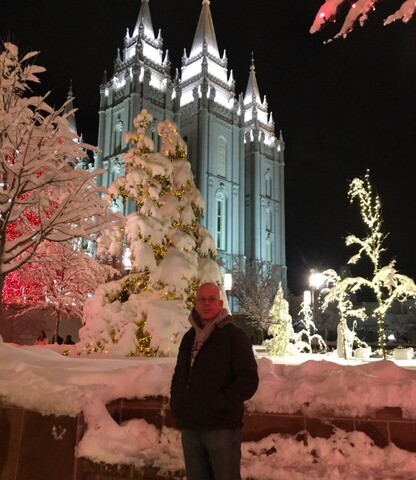
Smith was so impressed by what he read that he went straight to the phone book to look up The Church of Jesus Christ of Latter-day Saints. “It listed ‘wards’ and ‘stakes.’ That meant nothing to me, but it was lunch time, so I called the ‘stake,’” Smith recalls with a laugh. The stake president, who had briefly stopped in his office to pick up something he had forgotten, just happened to be there to answer Smith’s call and connected him with the missionaries.
Immediately, the teachings of the gospel resonated with Smith, explaining questions and dreams he had had since childhood.
“When I was a kid, elementary-school age, I used to have this recurring dream every night for a year,” Smith says. In the dream, Peter, James, and John were in heaven walking away from him as the clouds parted and a ladder descended from the heavens, leading to earth. Then a voice came, speaking to the three men, who nodded and began descending the ladder.
“I never understood that dream until I read about the Melchizedek priesthood and how Peter, James, and John came down and [restored it to earth],” Smith says. Suddenly, the nature of God, the plan of salvation, Smith’s purpose on earth—all of it made sense.
Getting Baptized and Losing Faith
In April 1983, the missionaries baptized Smith a member of the Church, but this new chapter in his life didn’t come without sacrifice.
“I gave up so much to become LDS. I had been dating a girl for two years, and she left me,” he says. “My family disowned me. . . . Our relationship took a beating.” But Smith’s conviction to the Gospel was enough to confirm this was the right choice for him.
Just a year later and already in his mid-20s, Smith had no plans to serve a mission, no funds, a new fiancée, and ambitions to become an attorney. But one day in 1984, while sitting in sacrament meeting, Smith says, “I just felt this presence, this feeling come over me, and it said, ‘You need to go on a mission.’ So I quit my job, left my fiancée, and served a mission.”
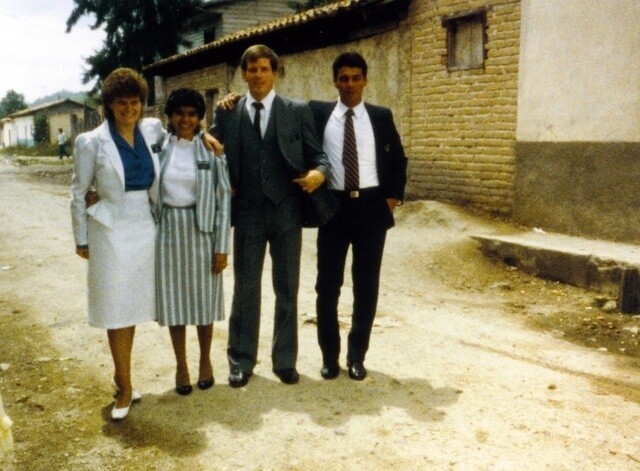
Despite acting immediately on his prompting, Smith almost returned from his mission before it even began. “When I was in the MTC, my family was against me being there. My fiancée was against me being there. I felt all alone. I went to a pay phone, and I called the Church headquarters. . . . I said to the lady that answered, ‘If nobody cares that I’m a missionary, I may as well go back home. Nobody cares I’m here.’ She said, ‘Could you hold, please?’ A few minutes later, a baritone voice says, ‘Elder, my name is L. Tom Perry. If nobody else cares, I do. Be my pen pal.’”
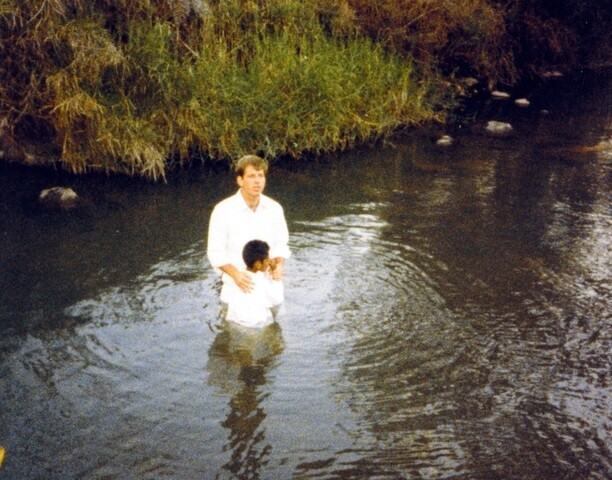
Smith would need Elder Perry’s letters of encouragement throughout his two-year mission in Honduras, a time during which his fiancée married another man and his parents divorced.
About the changes in his family, Smith notes, “That was a trip. . . . I am listening [to a letter cassette] and my parents are saying, ‘Well, it’s a great day today, son. The weather is great. We’re doing great. I’ll catch up with you in a day or two.’ Click, click. ‘Son, we’re getting divorced.’”
With his pen pal sending support from Church headquarters, Smith made it through his mission, and life took a positive turn when he got home. He dated and married a woman he met on his mission, began attending Western Michigan University Cooley Law School full time, and started a full-time job to pay his way through—a feat unheard of for those in rigorous law programs.
It was during this time that Smith attended the Hill Cumorah Pageant in Palmyra, New York. “There were a lot of anti-Mormon protestors around,” he recalls. “And I debated with them—that was my third year of law school. I came back from that wanting to be the smartest Mormon ever so I could debate with these folks and show them the error of their ways. But the more I studied, the more I discovered things that I didn’t believe and hadn’t heard before.”
Gradually, Smith descended into a spiral of anti-Latter-day Saint literature and disillusionment, angry toward the faith he had sacrificed his family, a fiancée, and two years of his life to join. Smith poignantly recalls the exact day—November 11, 1989—when he lost his testimony of the Church.
Fighting Against the Church
After losing his faith, Smith not only stopped attending church but asked for his name to be removed from membership records. “I spent from 1989 on battling against the Church. I hated the Church. It had deceived me. It had broken up my family. It had cost me so much,” Smith says.
Smith joined several online debate boards, using his skills as a litigator to tear down Latter-day Saint beliefs. He taught classes in other churches demonstrating why he believed the Church was false and deceptive. “I was very vocally anti-Mormon,” he says.
Even while actively fighting against Latter-day Saint beliefs, however, Smith’s connection to the Church never fully disappeared. On one debate board, he met a member of the Church named Mike. Despite debating viciously against one another, the two became friends. “Mike kept saying, ‘You’ll be LDS someday,’” Smith remembers. At the time, Mike’s insistence seemed not only impossible but insane.
Mike didn’t give up on Smith, however. “Every week [beginning in] 1999, he put my name in the temple,” Smith recalls, his voice breaking with emotion.
By 2005, the deep hatred Smith felt for the Church began to ebb. “I started to feel a pull to come back,” he says. But after attending church a few times, Smith still felt he couldn’t belong to The Church of Jesus Christ of Latter-day Saints. He could not receive a renewed testimony of those things he once knew. He still felt the pain that being a member of the Church had brought into his life.
But he could not shake that pull from the Spirit. In 2009, while Smith was dreadfully ill with the swine flu, his son brought two visitors into his room—missionaries who had just knocked on the door. Though Smith told them they were not wanted, the elders offered to give him a blessing. At the time, the swine flu pandemic had terrified people around the nation. But here were these two young strangers willing to love him, willing to bless him, willing to try to heal him, and it touched something inside him. So Smith agreed.
“They gave me the blessing. I was healed right then,” Smith says. “I got out of bed and walked them down the stairs.”
After the blessing, Smith tried attending church again and even met with the stake president. But when he learned he would need to undergo a Church hearing to be eligible for rebaptism, he walked away, feeling it was unfair to put him on “trial” when he felt he had done nothing wrong.
“But the pull never went away,” Smith says.
Finding a Testimony Again
During his years of fighting against the Church, Smith and his first wife divorced. But by 2014, Smith was happily Catholic, happily living in a historic district in Dallas, Texas, and happily remarried.
That year his wife, Susan, had been offered a promotion in Baltimore if she made it through the vetting process. With Smith working as a managing attorney in Texas, the prospect of a promotion that would take his wife so far away from him was bittersweet.
He called up his good friend Mike, asking him to pray for them and to put Susan’s name in the temple. As a joke, Smith added, “However, Mike, if God really wants me to be LDS again, He will send her to Salt Lake.”
Smith continues: “There wasn’t a position open in Salt Lake, so I felt pretty comfortable saying that. But the very next day the person in Salt Lake retires and my wife’s paperwork is transferred from Baltimore to Salt Lake, and she is hired with no vetting. I called Mike and said, ‘You are not going to believe this. Susan is going to Salt Lake!’ And he said, ‘Well, you know what you told God.’” When Smith explained that he had only been joking, Mike quipped, “God wasn’t.”
After this exchange, Smith felt shaken and reawakened to the possibility of returning to the Church. “I hit my knees and said, ‘Okay, God. You want me to be LDS again? Fine, but you’ve got to do your part. I don’t have a testimony, and I have these issues that I need answers to.’” After listing all his questions and doubts, Smith watched in awe during the following days.
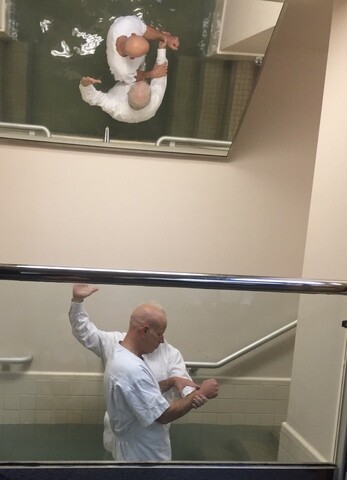
He recalls, “One by one, I would wake up in the middle of the night with an answer—every single night. One of my issues was [the lack of] archaeological evidence of the Book of Mormon. [One night] God said to me, ‘Does the fact that you can walk the streets of Jerusalem make the Bible true?’ And I said, ‘No.’ He said, ‘But what if somebody uncovered a sign tomorrow that said, ‘Welcome to Zarahemla, population 420’? What would that do to the Book of Mormon?’ And I said, ‘Then it would make it true.’ But He said, ‘Then where would be your faith?’”
Still, Smith had other questions about Joseph Smith’s life, treasure seeking, polygamy, and other difficult topics in Church history.
These issues were addressed as well. “One night,” Smith recalls, “God said, ‘Okay, Mr. Attorney, if you are so smart, who would you choose to be a prophet? You, who doesn’t believe anything? A doctor who needs proof? I happened to choose a young boy who could accept the impossible, who could dream the unimaginable. That’s the kind of person who was needed to be able to accept and to believe the visions he was seeing and act on the voices he was hearing. Would you have? You have [spent] 26 years fighting it.’”
These answers humbled Smith, opening his eyes to the fact that no matter how much he searched, researched, and debated online, these answers could come only from his Heavenly Father.
One by one, his questions fell away until, on March 16, 2015, he awoke with his testimony alive and strong. “In my mind, I could see the Lord, and He walks up to me and says, ‘Okay, I have kept your testimony warm and safe. This time take care of it.’” Smith recalls the Lord cupping His hands around the testimony and placing it on Smith’s heart. “He held it like a living thing when He gave it back to me. [And I realized that] it is a living thing, and if you don’t feed it and nourish it and nurture it, it will die.”
Smith returned to the same stake president he had met with in 2009, asking to be re-baptized, knowing he would face a Church hearing. “But the difference is, this time, because I had my testimony back, I was willing to do whatever it takes,” Smith says. “It’s cool when you know you have to have a Church court but everyone is rooting for you.”
Less than a week after his Church court, Smith was once again baptized a member of The Church of Jesus Christ of Latter-day Saints.
Meeting President Uchtdorf
Before his baptism, while he was visiting his wife in Salt Lake City during general conference and Easter weekend, Smith had a strong prompting: he needed to move to Salt Lake City. The only problem was that Susan was a born-and-raised Texan, and Smith didn’t know how she would respond to the news.
When Smith broached the topic, Susan admitted, “I haven’t known how to break this to you, but I want to live here from now on. I don’t want to go back to Texas.” But there was still another problem: their historic house in Dallas, built in 1929, was riddled with foundation problems and nearly every other problem you can imagine—it was virtually unsellable. Undaunted, Susan responded, “We’ll think of something. If the Lord wants you here, something will happen.”
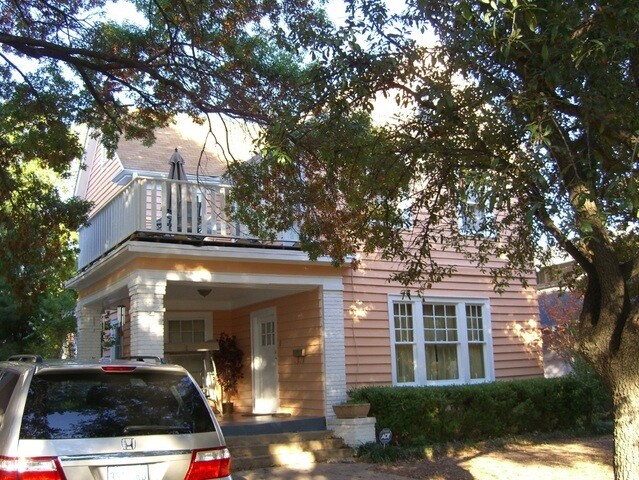
Soon thereafter, Smith received a knock on his door. A complete stranger offered to buy his house for more than its value. Even after Smith explained the foundation problems, the man insisted on buying the house. Yet, on a later trip to Dallas, when Smith returned to his old home, he learned that the buyer of the house had disappeared and the house was in foreclosure. For the Smiths, the sale of the home was a sign and a miracle.
“When the Lord wants you someplace, He wants you someplace,” Smith affirms. It was in 2016 that he received the phone call from then-President Dieter F. Uchtdorf and an invitation to meet the apostle in person. During their meeting, President Uchtdorf asked for permission to relate Smith’s story in the priesthood session of the October 2016 general conference.
In his talk, titled “Learning from Alma and Amulek,” President Uchtdorf said, “I was touched by the journey of one brother who asked himself, ‘When the Lord calls, will I hear?’ I will call this fine brother David.” After detailing Smith’s unusual story of reconversion, President Uchtdorf added, “I am happy to report that this past summer, David’s blessings were restored to him. He is again fully participating in the Church and serving as a Gospel Doctrine teacher in his ward. He takes every opportunity to speak to others about his transformation, to heal the damage he caused, and to bear testimony of the gospel and the Church of Jesus Christ.”
Shortly after sharing this incredible story, President Uchtdorf ordained Smith a high priest. Before the ordination, he asked if he could speak with Smith and his wife. While Smith was expecting some form of apostolic guidance, he was surprised when President Uchtdorf took 30 minutes to talk to Susan, who wasn’t a member of the Church. “He told her, ‘Bring what you have, and we’ll see if we can add to it. And I know that your husband wants to be sealed to you. We’ll save a place for you in the temple,’” Smith remembers.
“The next night, my wife says, ‘I’m ready for the discussions.’” On September 23, 2017, Susan was baptized a member of the Church.
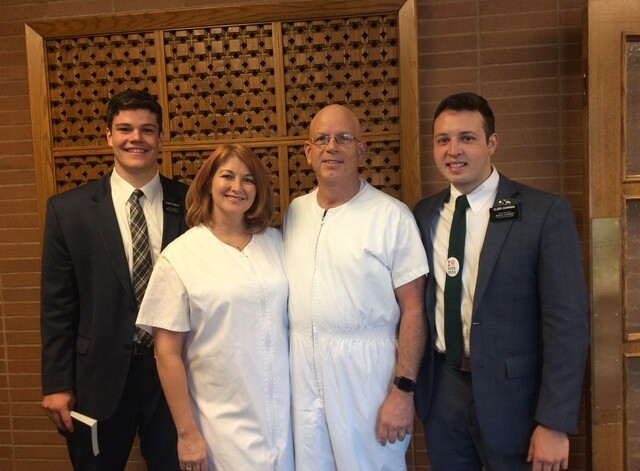
Inspiring Others
While Smith’s story has inspired those close to him, it has also touched thousands across the world in immeasurable ways.
The day after President Uchtdorf related Smith’s story over the pulpit, Smith walked past a family on Temple Square who were animatedly discussing the talk. “An older gentleman, I’m assuming it was the father, said, ‘You heard President Uchtdorf’s talk. Anybody can come back to the Church, even if they’ve been gone for a long time. There’s still hope; there’s still prayer. It happens.’ And the younger man said, ‘How do we know he didn’t just make that story up?’” Smith stopped and interrupted the conversation by introducing himself.
“He didn’t make it up,” he explained. “I’m the guy he talked about.”
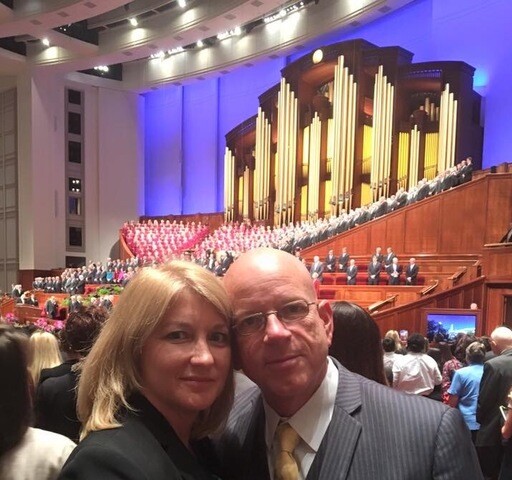
Even before the October 2016 priesthood session of general conference, Smith’s story had a way of reaching those who needed to hear it. On April Fool’s Day 2016, he received a call from a sister missionary asking if Smith had just logged in to mormon.org requesting answers to his questions. Smith was out of town, his laptop hundreds of miles away. There was no way he could have logged in.
But the sister kept insisting that she could see that Smith had logged in and requested to talk with a missionary. She could quote all his information. She could see the conversation. But still, Smith knew nothing about it.
Confused and a bit flustered, the sister missionary asked if Smith knew about the Church. “I said, ‘Well, let me tell you a little story,’” Smith says. “I told her my story, and she began to cry. She said, ‘I am at the MTC. I was considering leaving my mission. I am having a testimony problem. Your story has restored my testimony. I am going back on my mission.’”
A year later, at a gun show, Smith struck up a conversation with another Texan about their home state when the discussion turned to the gospel. Smith told the man, with a laugh, “I’m a member of the Church. In fact, if you listened to President Uchtdorf’s talk, you’ve heard about me.”
The man suddenly became serious and quiet. He pulled Smith aside, explaining that he had been on the cusp of leaving the Church when he heard that very same talk and recommitted himself to living the gospel. As the two talked more about their lives and backgrounds, the young man discovered yet another way he knew Dusty Smith: In 2009, he happened to knock on Smith’s door as a missionary—and healed him with a blessing.
Sharing His Story
“In November 2014,” Smith says, “I was happily living in Texas as an attorney, happily Catholic, vocally anti-Mormon, living in a historic district. Two years after that, I am living in Salt Lake in an apartment. Not only am I a member of the Church I decried [but] I was talked about in general conference and then ordained a high priest by an apostle. If you just take that two-year time frame, that is insane. That is just absolutely insane.”.
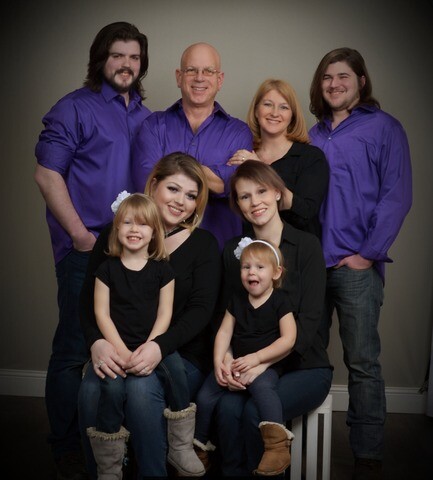
Many who have heard his story comment on how they wish they could experience even one miracle like those that fill Smith’s life. His response? “They probably do. You are just not seeing them. Sometimes the Lord will open the waters, sometimes He’ll make the earth shake, sometimes He’ll cure the sick, sometimes He’ll raise the dead, but sometimes, He whispers.”
Since his reconversion to the Church, Smith has felt compelled to spread his story and testimony through conversation, writing, talks, and even firesides. Part of that desire stems from a blessing he received from President Uchtdorf—one that said his story would reach thousands, bringing them light and hope. But Smith is the first to recognize that such influence has little to do with him or his story and everything to do with the transformative grace of our Heavenly Father.
“I want people to know that God loves them and that there is hope and that even when people have turned their backs on the Church, there is hope that they will come back,” Smith says. “People who [have loved ones] who have gone away from the Church can look at my story and realize you should never give up. My friend Mike never gave up. Think about that. From 1999 until 2015, every week he put my name in the temple. I want people to know that God loves us, and He is intricately and acutely aware of us. He knows us. He waits for us. He doesn’t give up on us even when we give up on Him.”
Tips for Those Who Are Doubting
“President Uchtdorf said it best. . . . He said, ‘Doubt your doubts before you doubt your faith,’” Smith says.
When questions of faith arise and doubts begin to plague you, Smith knows from experience that is when you need to “go back to the basics.” He continues, “You can get caught up in the superfluous stuff. You can absolutely get caught around the axle about some of the things Church leaders have said or members have said. Yes those things can affect you, but they shouldn’t.”
With the Internet and so much knowledge at our fingertips, Smith knows trials to our faith will come. But he reminds members that so much of what we read is taken out of context, especially when considering Church history, which was written in a “different time.”
While Smith acknowledges members and leaders within the Church are human and make mistakes, he knows those weaknesses don’t lessen God’s works. “Moses disobeyed, Jonah disobeyed, Peter disobeyed,” he says. “Disobeying does not make you less of what you are called to be. It means you need to repent. We shouldn’t hold people up to higher expectations than we hold ourselves.”
But even with all of the information, arguments, or questions that can enter our minds, Smith says he has chosen to believe. “I haven’t had any doubts since I got baptized. I haven’t let myself get there. We choose so much of what we feel, do, act, and believe. . . . Every day I wake up grateful that I am alive, grateful I belong to the Church, thankful that the Lord for whatever reason has incredibly blessed me.”

